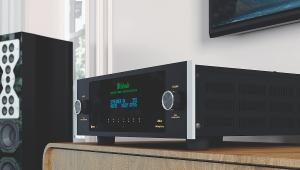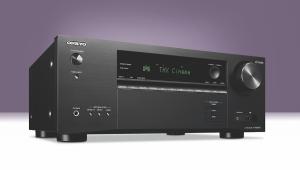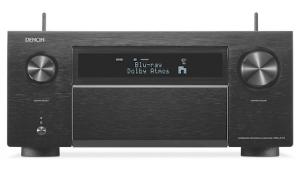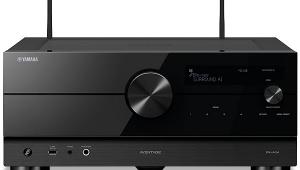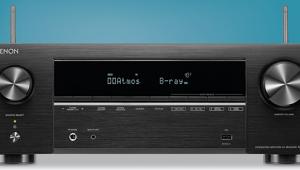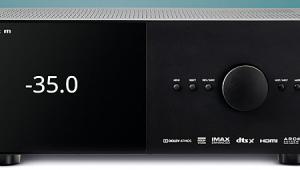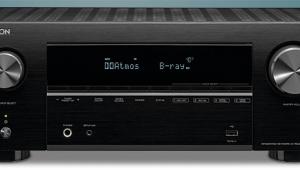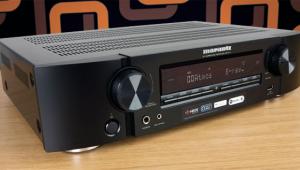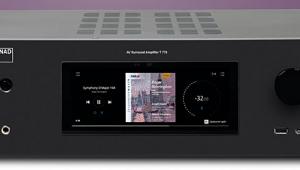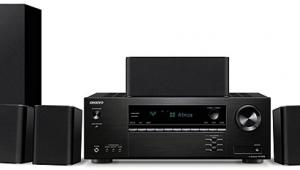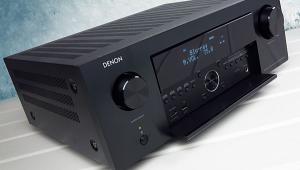Lexicon DD-8 review
![]()
![]() Fresh from scooping the industry equivalent of an Oscar for technical innovation at this year’s CES, Lexicon’s DD-8 power amplifier comes to the test bench flaunting the looks of a size-zero super-model – wistfully thin, lithe and lightweight, and sexily wrapped in cat-walk style designer clothes. Unlike most supermodels there is more than airspace between its rack-mountable ears, too. Using some clever proprietary amplifier technology, Lexicon’s DD-8 packs eight channels of 125W into that slimline chassis.
Fresh from scooping the industry equivalent of an Oscar for technical innovation at this year’s CES, Lexicon’s DD-8 power amplifier comes to the test bench flaunting the looks of a size-zero super-model – wistfully thin, lithe and lightweight, and sexily wrapped in cat-walk style designer clothes. Unlike most supermodels there is more than airspace between its rack-mountable ears, too. Using some clever proprietary amplifier technology, Lexicon’s DD-8 packs eight channels of 125W into that slimline chassis.
Quite clearly the DD-8 has more than the odd terminal pointing at the custom installation market. It is 1U high for starters. I have not idea what a U is, nor how many of them you get to the pound, but at just 4.5cm tall, without its feet on, we are talking seriously bijou. It has detachable rack-mount cheeks at the front in case you have a rack with a spare U in it and offers current-sensing power up from standby, so you shouldn’t really need to touch it once it is installed.
Peeking around the back, it looks pretty much nothing like a traditional multichannel home cinema amplifier. With eight channels of power on board there simply wasn’t room to put in eight pairs of chunky binding-post speaker terminals. Instead you get phoenix-type connectors with screw-in terminals for bare wire connection. This caused something of a kerfuffle at the Stevenson homestead. Once I had meticulously removed seven pairs of banana plugs from the loom, I realised the gauge of speaker cable I was using was too heavy for the very small (approx 2mm diameter) aperture in the phoenix connectors.
I re-wired the system with alternative, lighter-gauge speaker cable but I can’t say I had a lot of confidence in the result. With the phoenix terminals packed so closely together, the chances of a stray copper strand shorting out across the terminals is high, particularly as the screw doesn’t hold the cable too firmly. You have to be spectacularly neat with the terminations, preferably dip-soldering the ends to stop stray strands, and ensure you are not going to have any forces pulling on the cables at the speaker end. I have subsequently been told this is a common connection method on CI amps and experienced installers can wire these connectors perfectly with one hand tied behind their back.
Input-wise you get a stereo bus phono input and individual phono inputs for all eight channels, with individual gain controls for each one. These tiny pots offer a massive -76dB to +13dB range, allowing you to fine-tune a multiroom system or set relative levels of a multichannel system if you don’t want to do it through your processor. The DD-8’s left and right bus inputs each feed four power channels simultaneously for multiroom install, and you can even set the DD-8 to feed all eight channels from a single mono input. There is also a bus loopthrough for daisy-chaining DD-8s in a bewildering array of powered channels and zones.
Back-peddling from the edge of power amplifier madness, I used the DD-8 in straight 8-in/8-out mode fed from a processor, and alternatively in bus mode to bi-amp stereo speakers for music.
![]()
The technology behind Lexicon’s cool-running, lightweight powerhouse is Harman and Texas Instruments’ co-developed DriveCore amplifier. Promising to be even more efficient than a standard Class D amplifier design, the DriveCore module is a single-chip amplifier, which the blurb says is the size of a dime. That would make it a four-inch long candy bar that tastes like burnt sugar, then. These modules run at 90 per cent efficiency, allowing Lexicon to design a 1kW amp with no fans or fins that is quite happy to be stacked up tightly in a rack with loads of other gear. But considering its looks, putting it in a rack in a cupboard seems a bit of a shame.
Going for a driveSitting on the floor, flanked by an array of old-school monster power amps, the Lexicon looks a little, well, intimidated. It isn’t, though. From the opening sequence of Drive Angry on Blu-ray the DD-8 powers out the car-fuelled chaos with a speed and precision that can make some big analogue amps sound positively pedestrian. There is a freshness and clarity to each sound effect that does wonders for increasing the pace of all action movies like this Nic Cage romp. Screeching car tyres have great realism and bass effects are tighter than Amber Herd’s dress.
The balance is on the lighter side of neutral, and, while effects like gunshots have impressive pace and transient impact, they are not delivered with the huge swathe of rolling thunder that you might expect from a power amp with this sort of price ticket. Using big floorstanding speakers all round, my usual setup is to run all channels set to ‘large’ with just dedicated LFE information going to the sub. Setup like this the Lexicon delivers sprightly and crisp bass to the main channels but lacks the last octave of ooomf. Time to reconfigure the processor…
In THX mode with all channels crossing over the subwoofer at 80Hz the whole system suddenly came together like a well-oiled two-piece jigsaw. With my Velodyne DD18+ handling the deep stuff for all channels, the Lexicon simply soared through the next few test tracks. I bathed in a huge-scale, ultra-fast sound that just begged me to upset the neighbours. Pushed hard in this configuration the DD-8 goes plenty loud without fatigue – despite what is a relatively modest amount of Watts-per-channel these days.
Switch to a more sedately-paced movie and the Lexicon’s excellent signal-to-noise ratio also comes into its own. Silences are very quiet indeed, with the gentle hum of my projector masking any sound emerging from the speakers. Dialogue is gifted with the same alacrity as the overall sound. There’s good tonal articulation. Male voices sound very real, yet don’t have the artificial resonance I’ve come to expect with Hollywood movies. That is a good or bad thing depending on your preference.
Using the DD-8 to bi-amp my front main speakers for music delivered an equally energetic and agile performance. It eked out top-end detail with a rare smoothness for a digital amp. I put on Birdy’s eponymous first CD to test one track and the Lexicon encouraged listening to the very end of the disc.
Cool, calm and collectedA good six hours of running hard and the DD-8 was not even particularly warm, let alone broken into a sweat. Compare and contrast to the amps in my room that it was temporarily replacing, which after running for six hours out-gun the central heating.
For installers the Lexicon DD-8 is an absolute no-brainer, as its tiny space requirement, sprightly and articulate sound and cool-running make the asking price look like a bargain. It is equally fine used as a more traditional home cinema amplifier in a THX style set-up, although those speaker terminals are damn fiddly and really limit your choice of speaker cable.
![]()
HCC VERDICT
Lexicon DD-8
Price: £2,250 Approx
Highs: Small, light and cool-running; crisp and spacious sound
Lows: Daunting speaker connections; works best in conjunction with a good subwoofer
Performance: 4/5
Design: 5/5
Features: 5/5
Overall: 4/5
Analysis
Power consumption: We measured an idling figure of just 18W. This is one power amp that you can comfortably leave switched on
Killer feature: The DD-8’s cool-running and 1U height make it ideal for tucking away in a rack
Specifications
Inputs: Stereo bus phono in/out; 8-channel phono input
Outputs: 8 x phoenix connector speaker outputs
Dimensions (without feet): 438(w) x 378(d) x 54mm(h)
Weight: 4.2kg
Features: Harman/TI DriveCore technology; auto-sensing power on/off; configurable outputs; bus input and loop-through output; eight-channel input; wide range trim pots for each channel; 12V triggers; rack ears supplied
 |
Home Cinema Choice #351 is on sale now, featuring: Samsung S95D flagship OLED TV; Ascendo loudspeakers; Pioneer VSA-LX805 AV receiver; UST projector roundup; 2024’s summer movies; Conan 4K; and more
|





